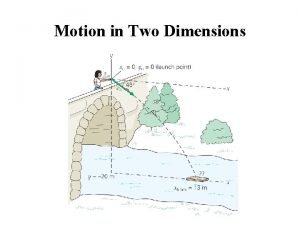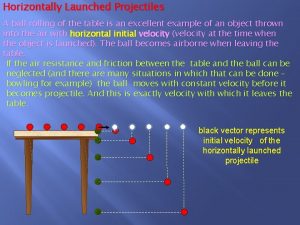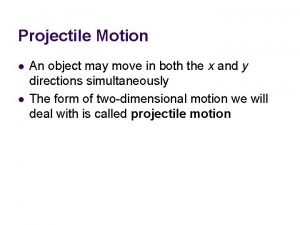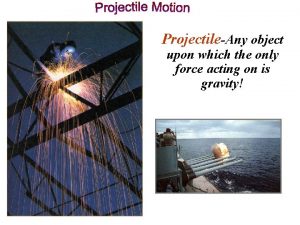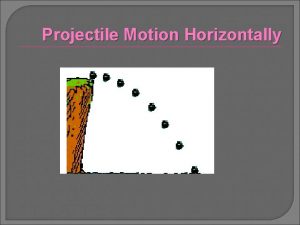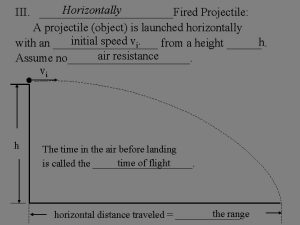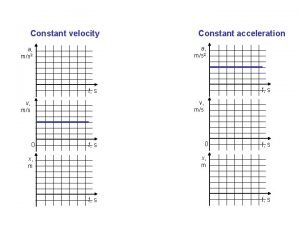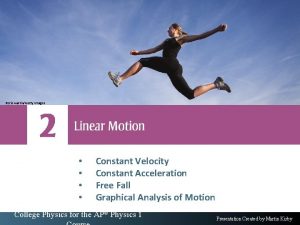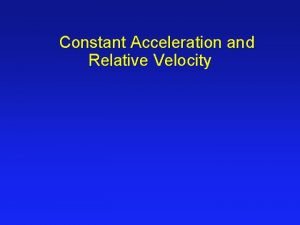Horizontal Projectile Launch Constant velocity horizontally Acceleration vertically













- Slides: 13

Horizontal Projectile Launch Constant velocity horizontally Acceleration vertically At any given location, you could solve for total velocity by using pythag. Thm…you first need to know horiz and vert vel.

Horizontal Projectile Launch Suppose v 1 = 8 m/s And the ball is 2 m above the floor a) t = ? List Givens: Horizontal (x): ax = vx = dx = b) dx = ? b) c) Final velocity =? Vertical (y): ay = vy = dy = (at floor)

A ball is thrown at 20 m/s at an angle of 35 above horizontal. It lands at the same height as its launch height.

A ball is thrown at 20 m/s at an angle of 35 above horizontal. It lands at the same height as its launch height. t=? dx = ? a) How long will the ball remain in the air? b) How far will it travel horizontally?

A ball is thrown at 20 m/s at an angle of 35 above horizontal. It lands at the same height as its launch height. t = ? v = ? dy(max) = ? a) How long will it take to get to the max y? b) Describe the velocity at this location c) How high will the ball travel?

Remember…use a vertical equation to solve for time (gravity makes a good timer) 1. Find the y-component of initial velocity v 1 y = v 1 sin 2. Recognize the vertical displacement (dy) dy = 0 3. Use an equation that includes: g, v 1, dy, t dy = v 1 yt + ½ g t 2 Solve for t

dy = v 1 yt + ½ g 2 t

dx = v 1 xt v 1 x = v 1 cos

dy = v 1 yt + ½ 2 gt …where t = half the total time. Or use 2 v 2 y = 2 v 1 y + 2 g dy such that v 2 = 0 More examples


v 1 = 25 m/s = 50 dx = ? v(t) = ? @ t = 1 sec

v 1 = 8 m/s = 30 dy = 1 m t=? dx = ?

v 1 = 45 m/s dy = 10 m = 40 How far away from the cliff can the thrower stand?
 Is v final velocity
Is v final velocity Site:slidetodoc.com
Site:slidetodoc.com What are the five elements of hair design
What are the five elements of hair design Space in hair design
Space in hair design Displacement formula projectile motion
Displacement formula projectile motion Horizontally launched projectiles
Horizontally launched projectiles How are uniform circular motion maps
How are uniform circular motion maps Maximum height
Maximum height Radial acceleration definition
Radial acceleration definition Linear acceleration vs tangential acceleration
Linear acceleration vs tangential acceleration Is radial acceleration the same as centripetal acceleration
Is radial acceleration the same as centripetal acceleration Tangential acceleration and centripetal acceleration
Tangential acceleration and centripetal acceleration Angular velocity to linear velocity
Angular velocity to linear velocity The only force acting on the projectile is
The only force acting on the projectile is




